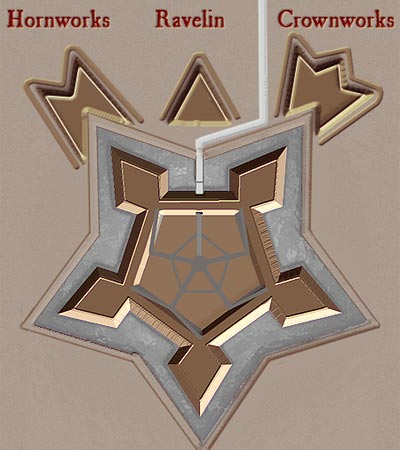Supplementing the Ravelin

In addition to ravelins, outer defenses were sometimes augmented with what were essentially expansions on the purpose of the ravelin: hornworks and crownworks. The shape drawn on the plans suggested those names, as you can see in the illustration at the right.
For most artillery forts, these outerworks were lower than the base fort so that fire from the fort itself would pass over them. Some engineers were cautioned, though, about building too much for outerworks because such could become shelters for attackers after being taken.
In the 1570's, the Dutch heaped up earthen ravelins and detached bastions in front of old town walls, following what the French Huegenots had done in the religious/civil wars in France of that time. Shortly thereafter, the Dutch expanded on the theme with angles thrusting out toward the intended enemy. Such structures were sited so as to command vulnerable ground, providing critical flanking fire. The Dutch patterns were quickly adopted by others.
In addition, fortifications were put up outside the town or city, some of which were essentially forts.
As the 17th century progressed past the time for this set of Web pages, outerworks were elaborated upon, with moats around them and outerworks on outerworks. In their complexity, they became, um, quite Baroque.
